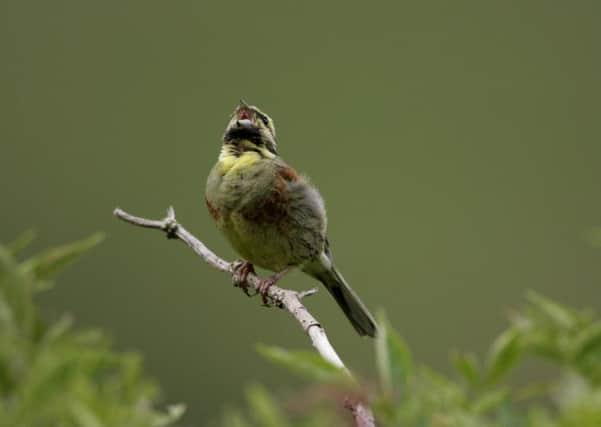New report reveals decline in South Downs wildlife


The Royal Society for the Protection of Birds (RSPB) Pulborough Brooks and Sussex Wildlife Trust in Woods Mill, Henfield, joined with other non-government organisations on Wednesday (May 22) to share their concern over ‘The State of Nature’ report that has indicated a fall in the number of bird species in the area.
The report, compiled by scientists from 25 wildlife organisations, was launched by Sir David Attenborough and UK conservation charities at the Natural History Museum in London yesterday evening.
Advertisement
Hide AdAdvertisement
Hide AdThe report reveals that 60 per cent of the species studied in the UK have declined over recent decades.
More than one in ten of all the species assessed are under threat of disappearing from UK shores altogether, and this trend is mirrored in Sussex and across the south east of England.
A large proportion of land in the south east is farmland, which supports a wide range of animals and plants.
For example, in the south east turtle doves and corn buntings have declined by 84 per cent and 62 per cent respectively since 1995.
Advertisement
Hide AdAdvertisement
Hide AdTurtle doves have not been recorded as a breeding bird at RSPB Pulborough Brooks since the mid 1990s, and not spotted at all in the last two years.
Chris Corrigan, RSPB South East regional director, said: “The region has consistently shown the greatest declines in both the farmland and woodland bird indicator lists and there is nothing to suggest that these declines are slowing.
“The south east is the country’s economic powerhouse and this puts extra pressure on our natural environment.”
Dr Tony Whitbread, chief executive of Sussex Wildlife Trust in Henfield, said: “Species like wart-biter, wryneck and bullhead, once common enough to mean something to our ancestors are now just strange words to us today. We must hope that species like sparrow, song thrush and ash tree, do not also end up as strange forgotten creatures in the future.
Advertisement
Hide AdAdvertisement
Hide Ad“We have lost a staggering proportion of our wetlands. There are now only about 230 hectares of reedbed in Sussex, a loss of 97 per cent.
“Similarly, ancient flood plain woodland, fen vegetation and coastal saltmarsh are all down to tiny fragments. This loss of habitat has been reflected in the loss of plants like pillwort and tawny sedge.”
While there is no single reason for the declines of these species, some of the main factors believed to be driving the falls of our farmland wildlife include: the loss of mixed farming, increased use and effectiveness of pesticides, changes in crops grown and increased field sizes.
Declines are happening across all habitats and species groups, although it is probably greatest amongst insects.